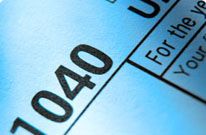Search results
Filing Individual Taxes - IRS
www.irs.govDeadline: April 18
- 1040 Form Instructions
- 1040-EZ Form Instructions
- 1040A Form Instructions
- 1040ES Form & Instr.
- Tax Tables Download
- Schedule A Form Instructions
- Schedule D Form Instructions
Use Schedule D (Form 1040) to report the following: The sale or exchange of a capital asset not reported on another form or schedule. Gains from involuntary conversions (other than from casualty or theft) of capital assets not held for business or profit.
SCHEDULE D (Form 1040) Department of the Treasury Internal Revenue Service Capital Gains and Losses Attach to Form 1040, 1040-SR, or 1040-NR. Use Form 8949 to list your transactions for lines 1b, 2, 3, 8b, 9, and 10. Go to www.irs.gov/ScheduleD for instructions and the latest information. OMB No. 1545-0074. 2023. Attachment Sequence No. 12
These instructions explain how to complete Schedule D (Form 1040). Complete Form 8949 before you complete line 1b, 2, 3, 8b, 9, or 10 of Schedule D. Use Schedule D: To figure the overall gain or loss from transactions reported on Form 8949; To report certain transactions you don't have to report on Form 8949;
Jan 20, 2024 · Schedule D is an IRS tax form that reports your realized gains and losses from capital assets, that is, investments and other business interests. It includes relevant information such as the...
Jan 5, 2024 · Schedule D is used for reporting short-term and long-term gains or losses. The calculations from Schedule D impact a taxpayer's adjusted gross income when they are added to Form 1040.
What is an IRS Schedule D? Schedule D (Form 1040) is a tax schedule from the IRS that attaches to the Form 1040, U.S. Individual Income Tax Return, Form 1040-SR, or Form 1040NR. It is used to help you calculate their capital gains or losses, and the amount of taxes owed.
Jan 6, 2023 · The Schedule D of Form 1040 is used to report capital gains and losses when you file your tax return. Learn how to use Schedule D during tax season, and who needs it.
Oct 19, 2023 · Most people use the Schedule D form to report capital gains and losses that result from the sale or trade of certain property during the year. In 2011, however, the Internal Revenue Service created a new form, Form 8949, that some taxpayers will have to file along with their Schedule D and 1040 forms.
Dec 25, 2023 · Schedule D (Form 1040) is an IRS tax form used to report capital gains and losses from the sale of capital assets during the tax year. This includes investments like stocks, bonds, mutual funds, and real estate.
Oct 4, 2023 · Schedule D is the IRS form you use to report sales and exchanges of certain assets, as well as the gains or losses from all asset sales. You use Schedule D to report money you made or lost by selling investments like stocks , mutual funds , digital assets, and publicly traded partnerships (PTPs).

